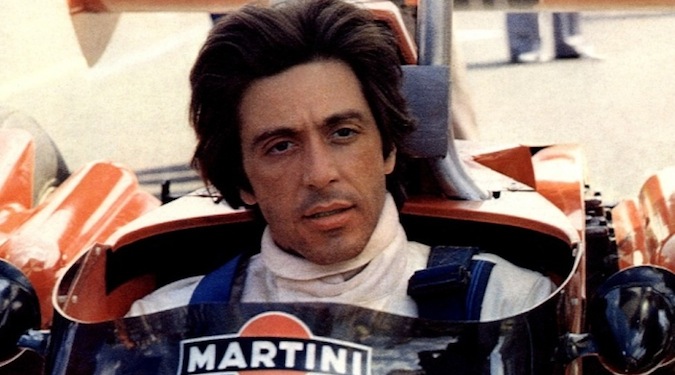
The titular character of Bobby Deerfield (1977) is a Formula One racer working the European circuits. After a fellow racer is killed and another injured in a freak accident, Deerfield becomes obsessed with what he believes is an error in the automobile. Deerfield goes to the hospital to visit the survivor of the crash and meets a woman who is dying.
Sydney Pollack’s film is about love, passion and mortality. Al Pacino and Marthe Keller have a great chemistry as the two leads and Pollack brings that out in subtle ways. However, cinematographically, Bobby Deerfield never really expresses the emotions of these doomed lovers. With a minimal plot it is essential that the film convey the gravitas of the situation visually as well as dramatically. The cool distance that Pollack maintains is antithetical to the way films like this work.
If one compares Bobby Deerfield to Douglas Sirk’s Magnificent Obsession (1954) the fundamental necessity of a more expressive cinema becomes starkly apparent. Sirk would undoubtedly find ways to partition the lovers within a frame or use a reflection to distort their appearance in some way to suggest the narrative subtext. It’s not that all the nuance of the film must be stripped away, but the medium itself must be employed as a part of the storytelling. Pollack’s interests have, traditionally, always been in what his actors are doing at the expense of his camera.
The scene with the balloons is as breath taking as Pacino’s Mae West impression is bizarre. Yet neither moment has any sense of agency or relevance to the emotional or narrative dynamics at hand. Bobby Deerfield is a film without momentum or substance; it’s a hollow shell of a picture propped up by a cast that is set adrift in images that remain detached and uninterested in their actions.
